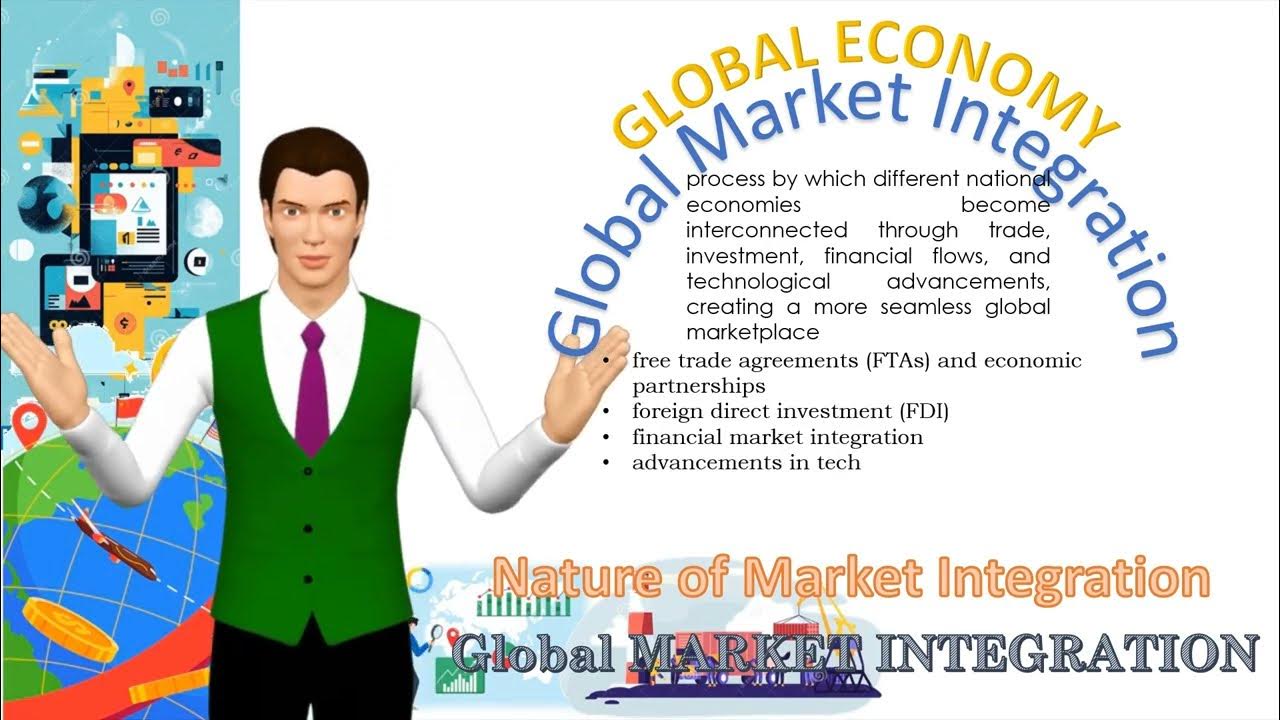Understanding the Heckscher Ohlin Model - Factor Endowments and Trade Explained (11 Minutes)
Summary
TLDRThis video explores the complexities of international trade and its role in the global economy. It introduces the Heckscher-Ohlin model, which explains trade patterns based on a country's resource endowments such as labor, land, and capital. The model shows how nations export goods that utilize their abundant resources and import goods that require scarce ones. The video also discusses the model's limitations, real-world applications, and how it helps policymakers and educators understand global trade dynamics. Viewers are encouraged to subscribe for more insights on economics and trade models.
Takeaways
- 🌍 International trade is a key driver of the global economy, promoting growth and development.
- 🤔 Understanding trade patterns is complex due to numerous variables like resource distribution and labor markets.
- 📊 Economists use models to simplify and explain trade dynamics, with the Hexar model being a prominent one.
- 🔍 The Hexar model, developed by Eli Hexar and Berle, focuses on the concept of factor endowments to explain trade patterns.
- 💡 According to the model, countries export goods that require resources they have in abundance and import those they lack.
- 🏞️ Factor endowments like labor, land, and capital are crucial in shaping a nation's trade capabilities.
- 🛠️ Nations rich in specific resources (e.g., Saudi Arabia with oil, Brazil with fertile land) tend to specialize in related goods.
- 📈 Over time, international trade can lead to price equalization of goods and resources, balancing markets globally.
- 📚 While the Hexar model is valuable, it has limitations, such as oversimplifying competition and ignoring modern factors like technology transfers.
- 🧠 The model remains a foundational tool for students, policymakers, and educators in understanding and strategizing around global trade dynamics.
Q & A
What is the primary focus of the video?
-The video focuses on understanding the complexities of international trade and how economic models, particularly the Hexar model, help explain trade patterns and dynamics.
Why is international trade considered complex?
-International trade is complex due to various factors, including differences in natural resources, labor markets, and technological advancements, which all affect trade patterns and make it challenging to predict and fully understand trade behaviors.
What is the Hexar model, and who developed it?
-The Hexar model is an economic model that explains international trade through factor endowments, such as land, labor, and capital. It was developed by economists Eli Hexer and Berle.
How does the Hexar model explain a country's trade patterns?
-The Hexar model explains trade patterns by suggesting that countries will export goods that require resources they have in abundance and import goods that require resources they lack. This is based on the concept of factor endowments.
What are factor endowments, and why are they important?
-Factor endowments are resources that a country possesses, such as labor, land, and capital. They are important because they determine what a country can produce efficiently and therefore influence what goods it exports or imports.
Can you give examples of how factor endowments influence trade patterns?
-Countries rich in natural resources, like Saudi Arabia with oil and Canada with timber, tend to export those resources. Countries with abundant skilled labor and capital, like Germany, focus on exporting technology-intensive goods.
What role does opportunity cost play in the Hexar model?
-Opportunity cost in the Hexar model refers to the idea that countries will import goods that are costly to produce domestically due to a scarcity of certain resources. This creates a comparative advantage in trade.
What are some limitations of the Hexar model?
-The Hexar model assumes perfect competition and identical production technologies across countries, which oversimplifies trade complexities. It also doesn’t account for modern trade factors like technology transfers and multinational corporations.
How does the Hexar model help policymakers and educators?
-The Hexar model provides a framework for policymakers to design trade policies based on resource endowments. It also helps educators and students understand the foundational principles of international trade and economic interactions.
Why is it beneficial to study the criticisms of the Hexar model?
-Studying the criticisms allows for a more nuanced understanding of international trade, highlighting areas where the model may fall short and offering insights into how other models can address these gaps.
Outlines

このセクションは有料ユーザー限定です。 アクセスするには、アップグレードをお願いします。
今すぐアップグレードMindmap

このセクションは有料ユーザー限定です。 アクセスするには、アップグレードをお願いします。
今すぐアップグレードKeywords

このセクションは有料ユーザー限定です。 アクセスするには、アップグレードをお願いします。
今すぐアップグレードHighlights

このセクションは有料ユーザー限定です。 アクセスするには、アップグレードをお願いします。
今すぐアップグレードTranscripts

このセクションは有料ユーザー限定です。 アクセスするには、アップグレードをお願いします。
今すぐアップグレード関連動画をさらに表示

Round Trip: The USA in World Trade (1952)

PENGANTAR BISNIS INTERNASIONAL - MK BISNIS INTERNASIONAL PERTEMUAN 1

DOE | TANTANGAN DAN PELUANG PERDAGANGAN SEL

Conferência de Bretton Woods: FMI, Banco Mundial e a OMC | Ricardo Marcílio

BAB 4 PEMBANGUNAN PEREKONOMIAN INDONESIA | B. PART 2 KELAS 8 KURIKULUM MERDEKA

Market Integration
5.0 / 5 (0 votes)
